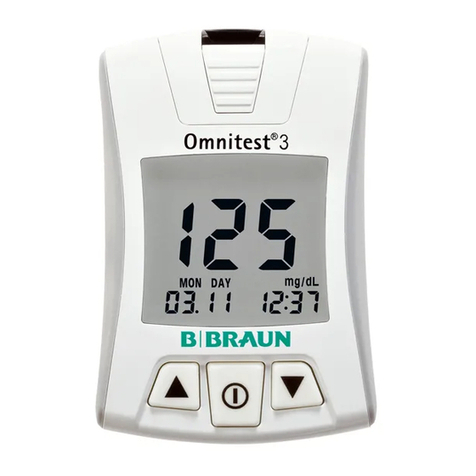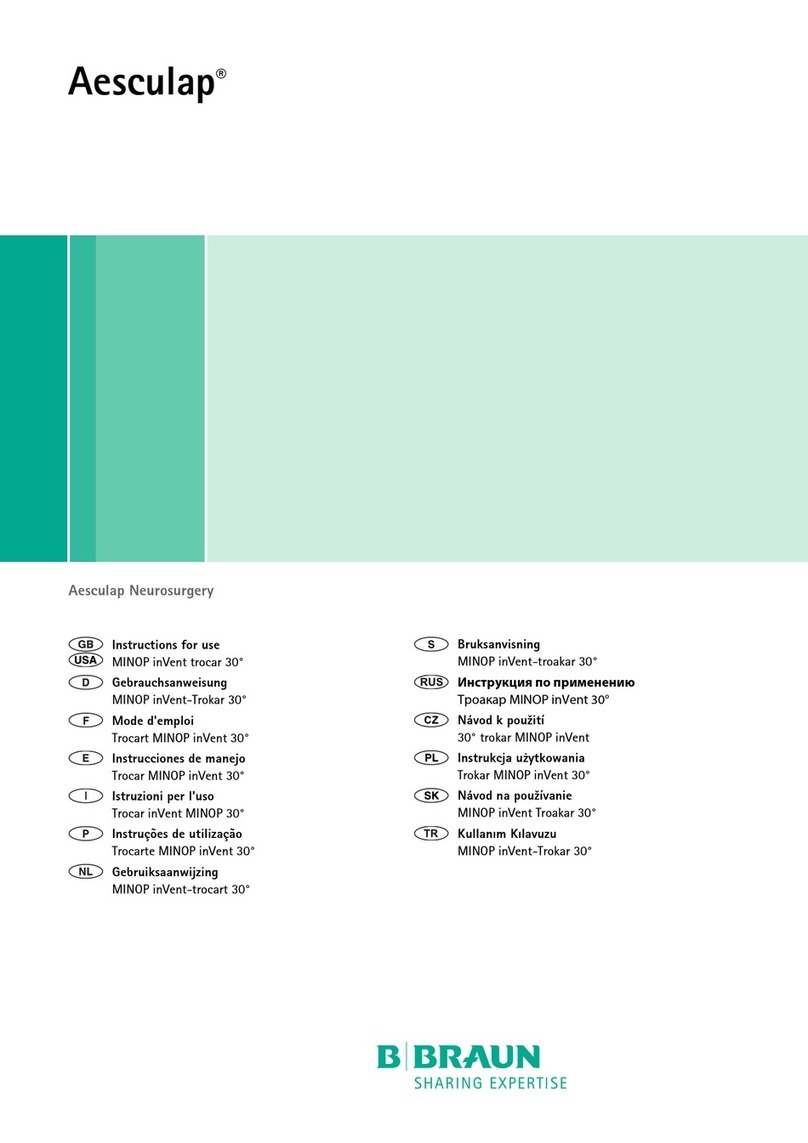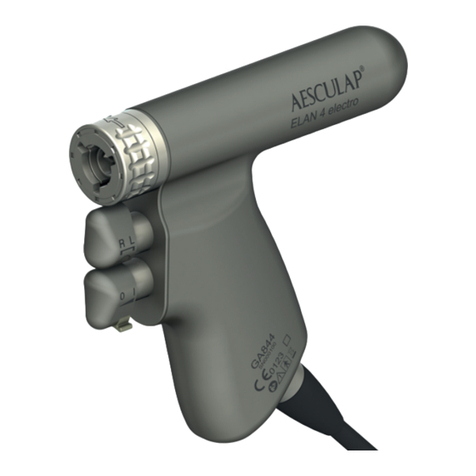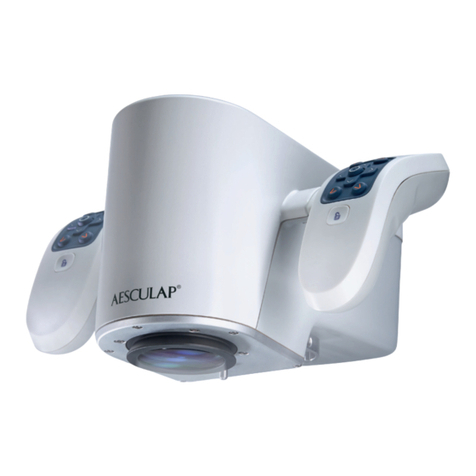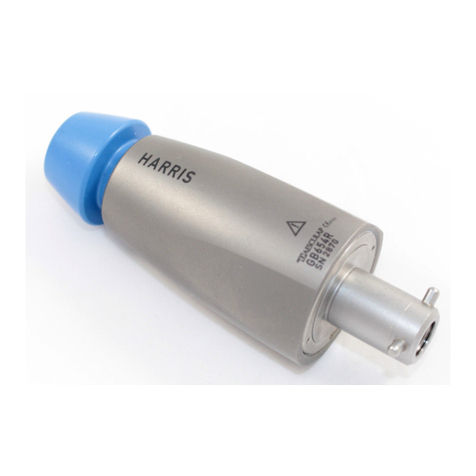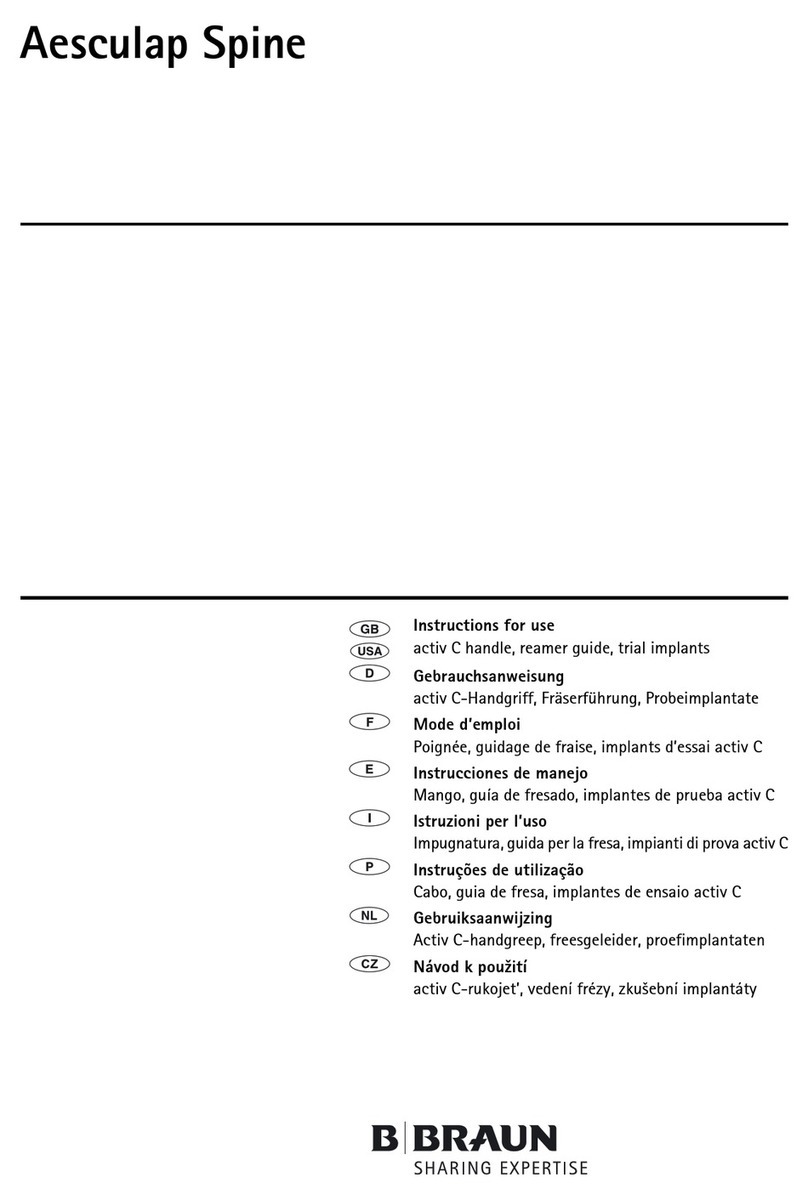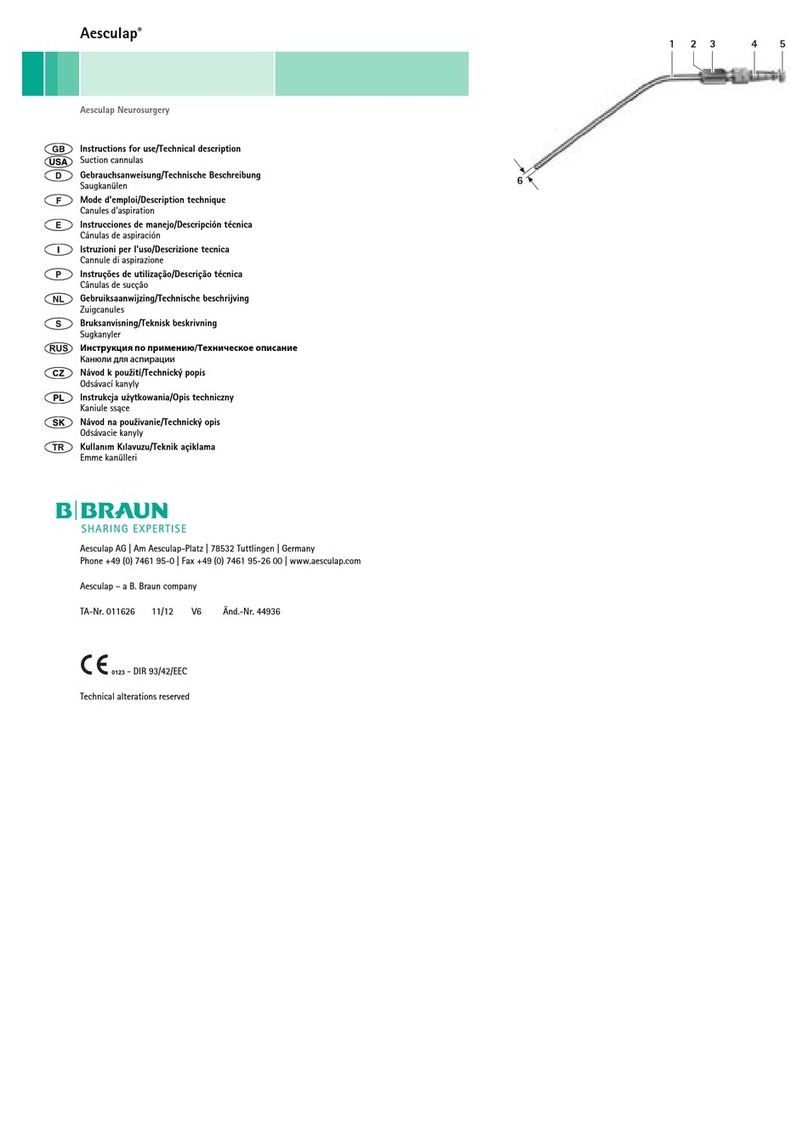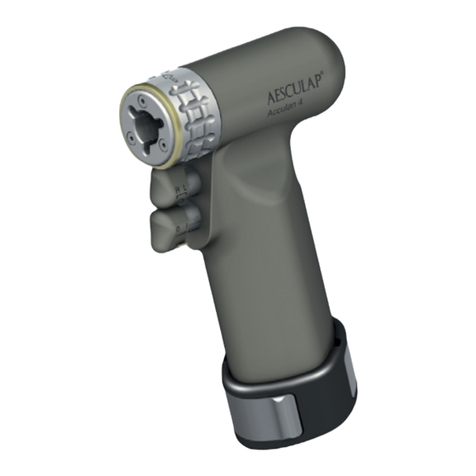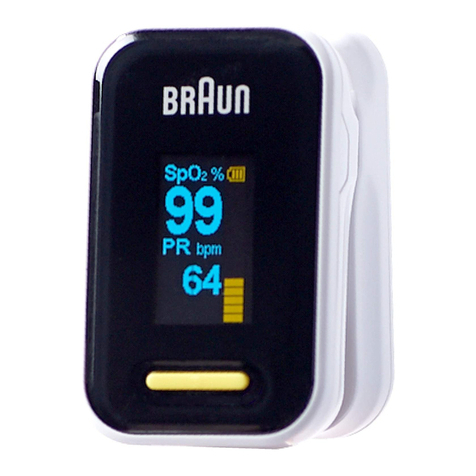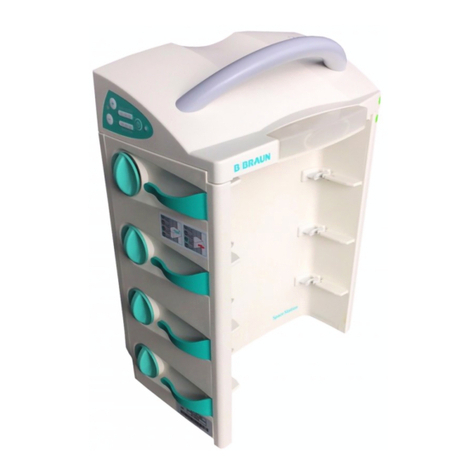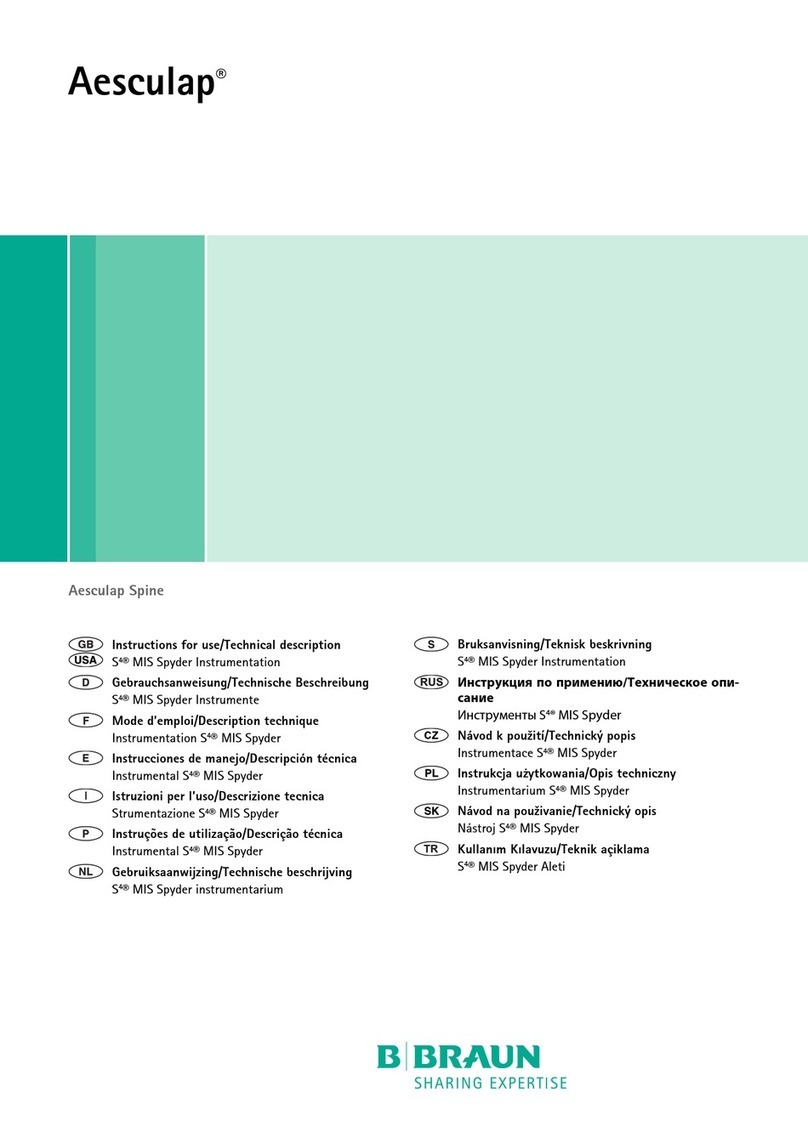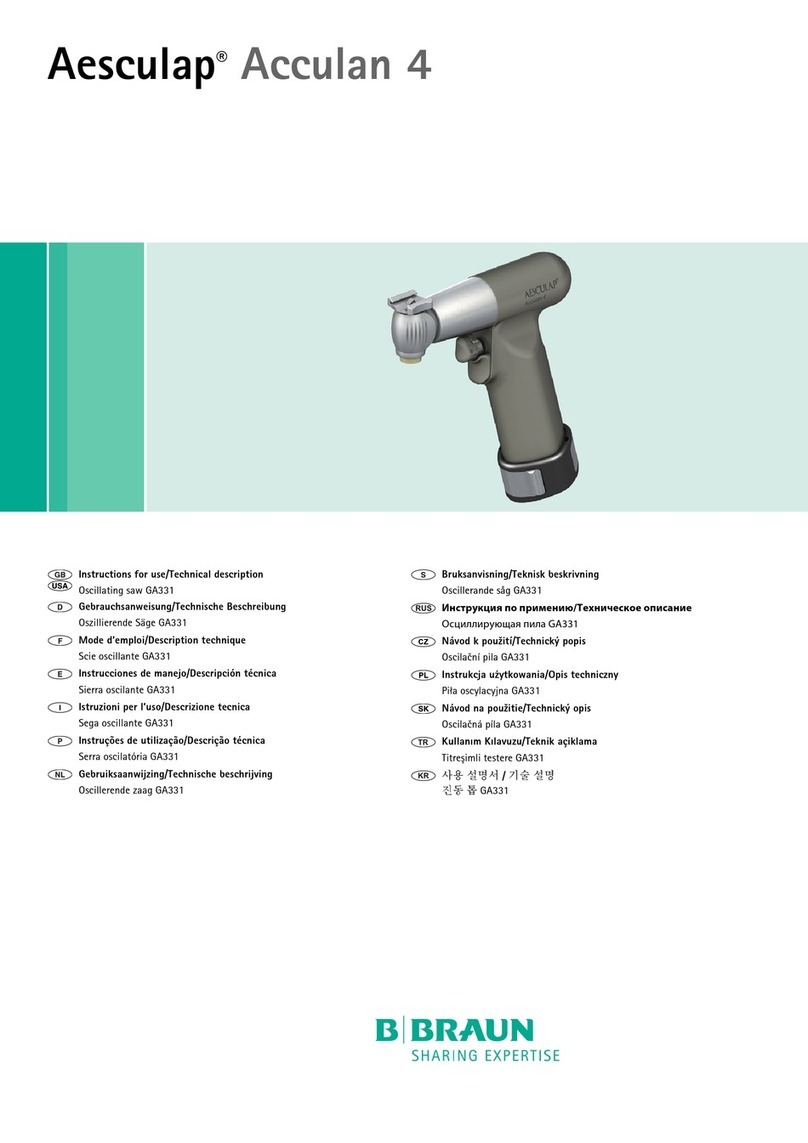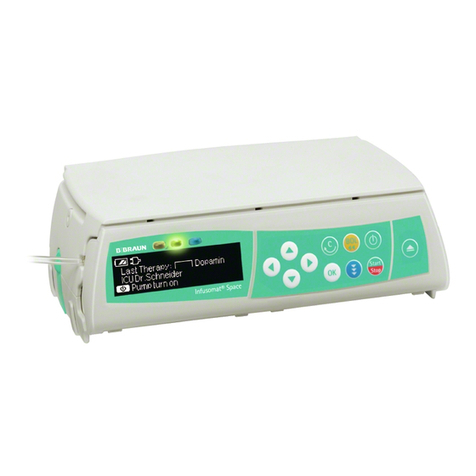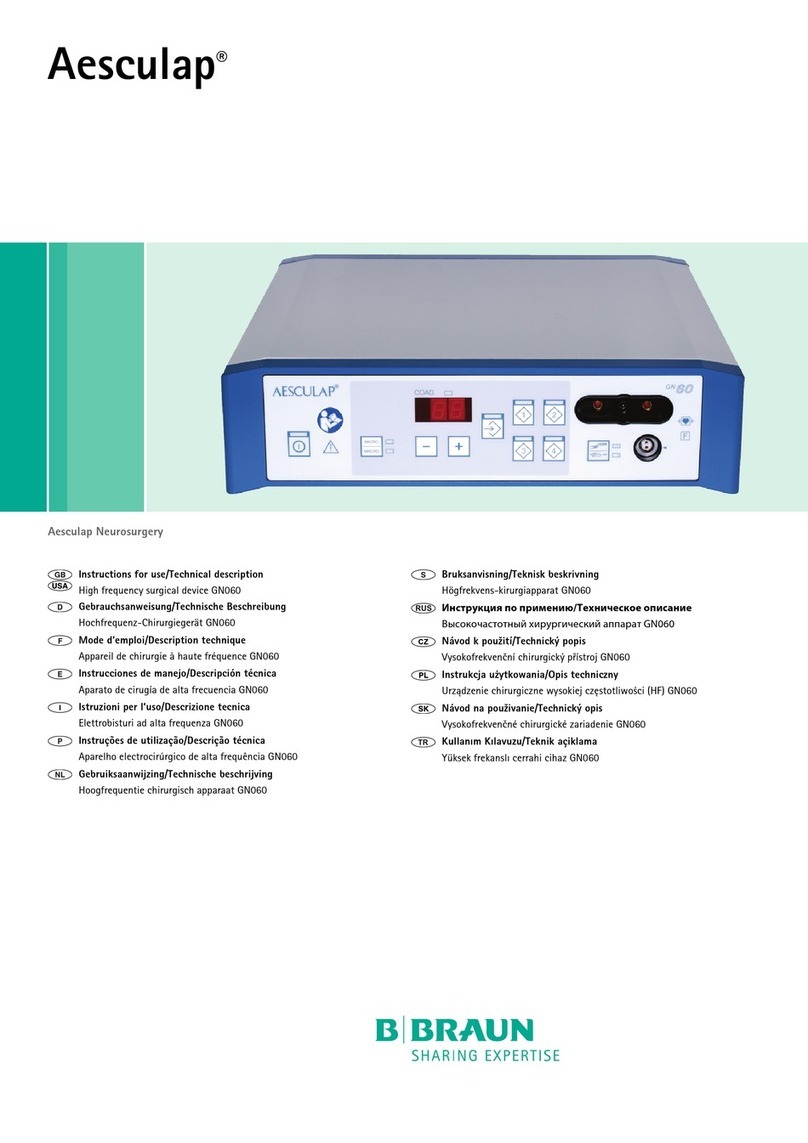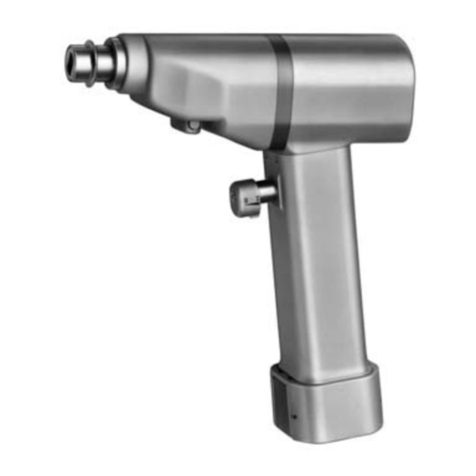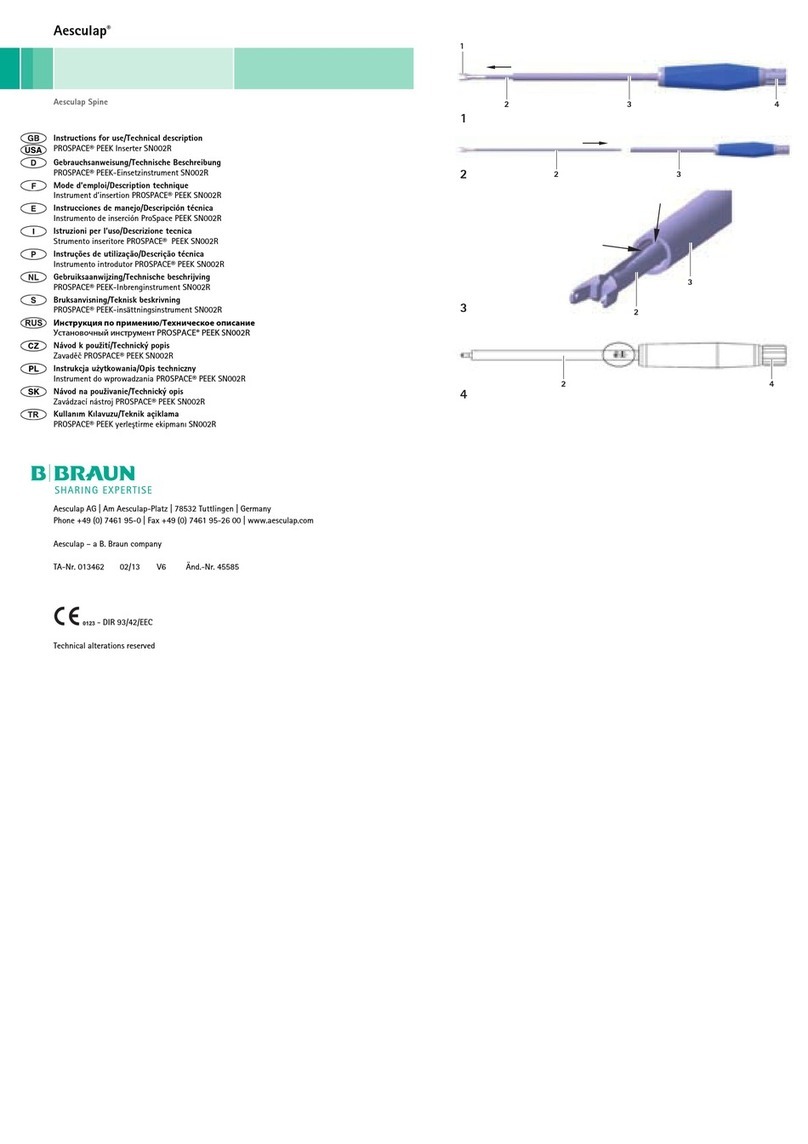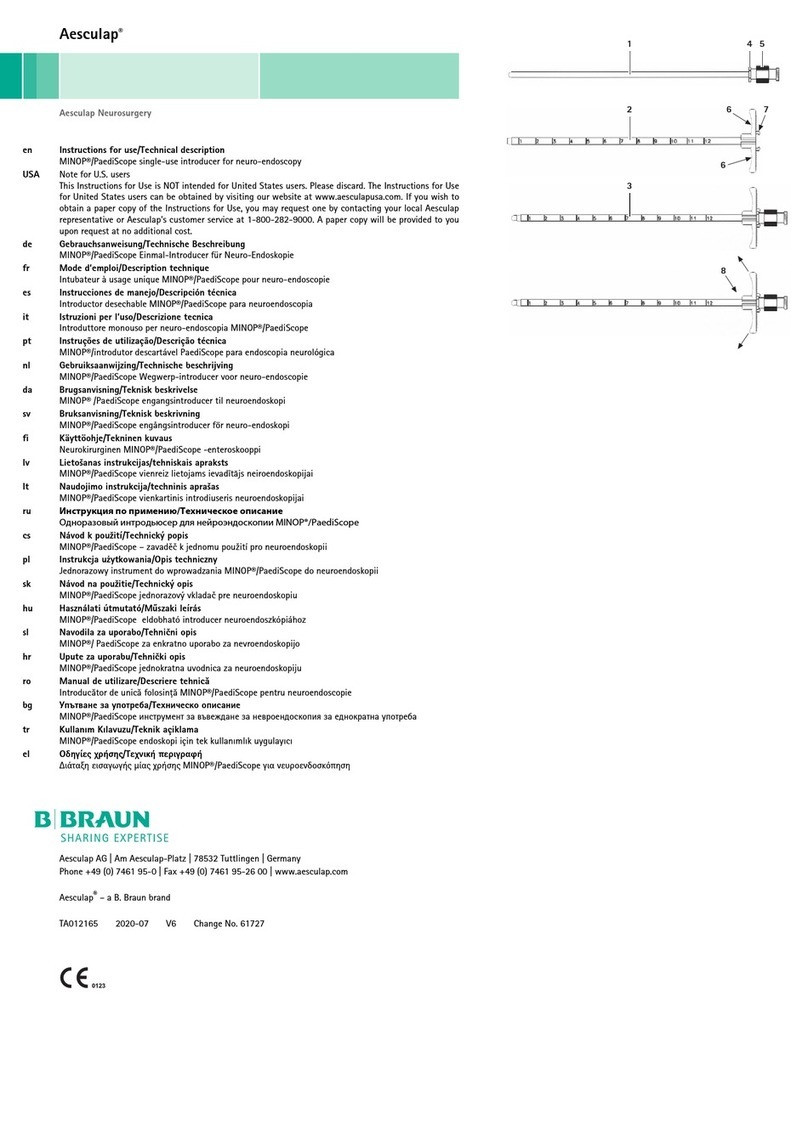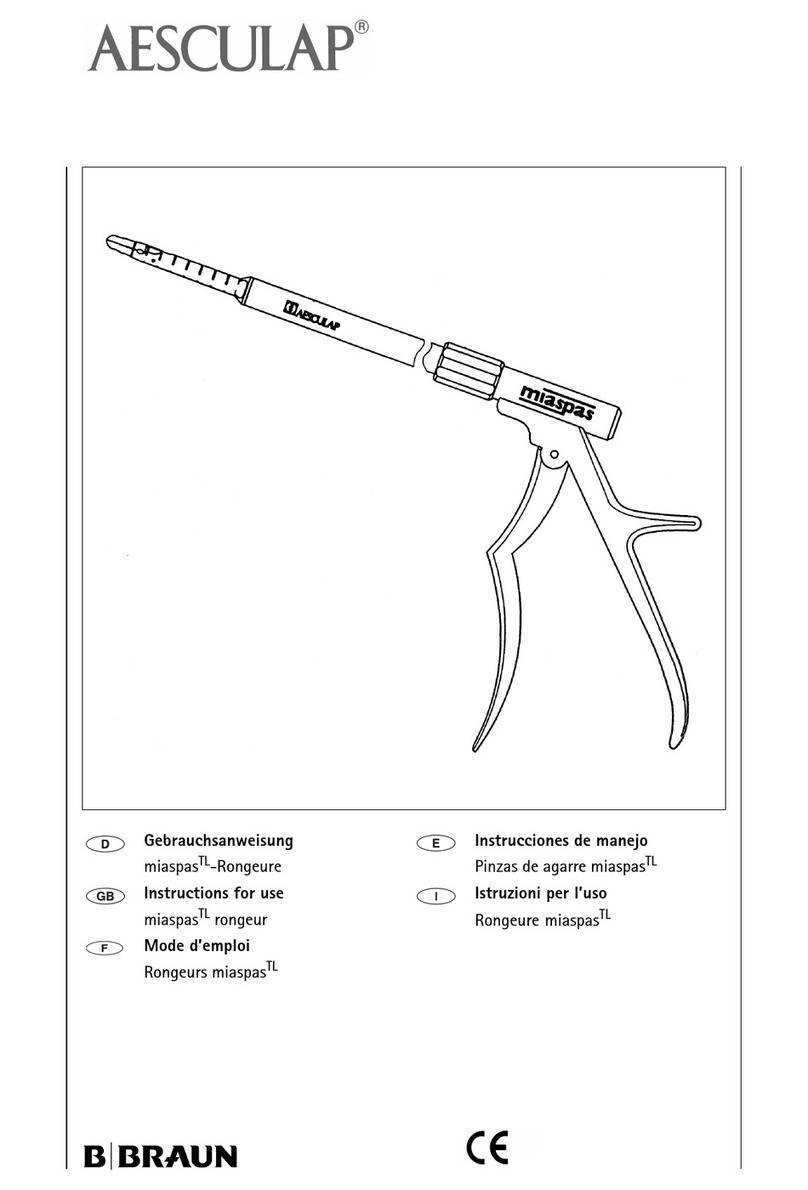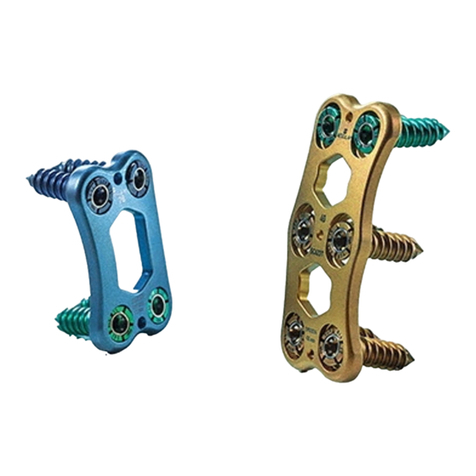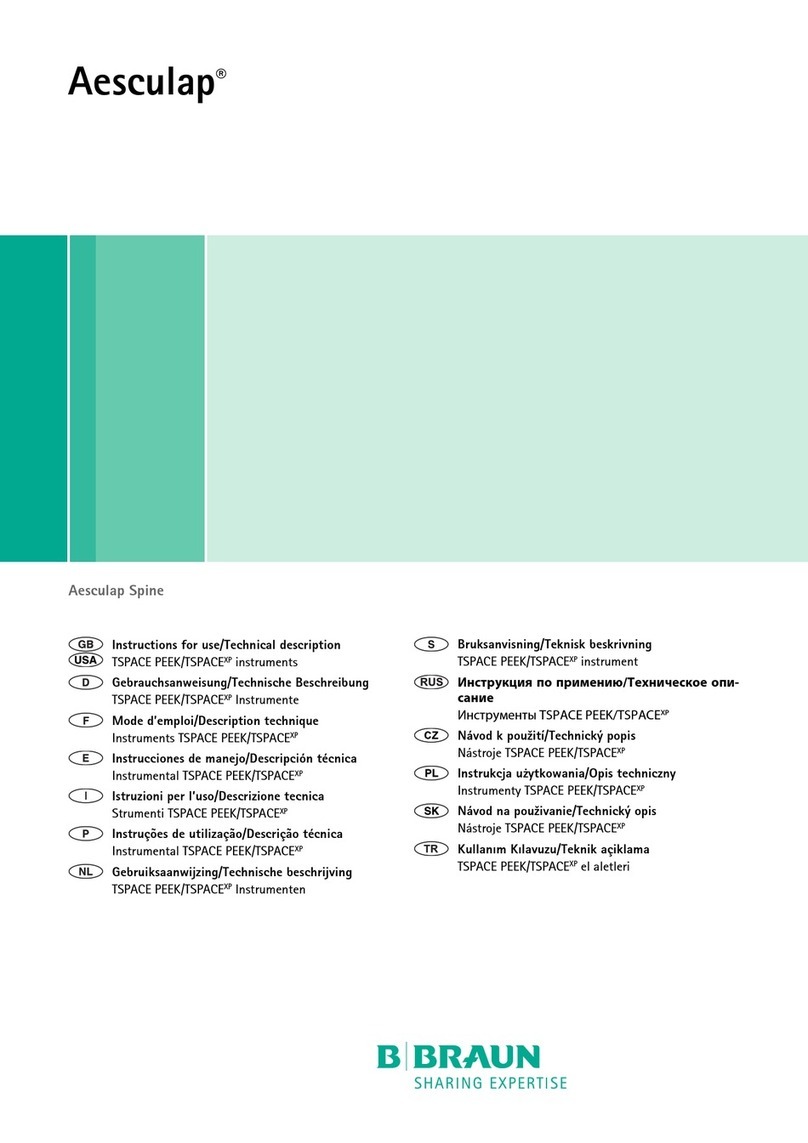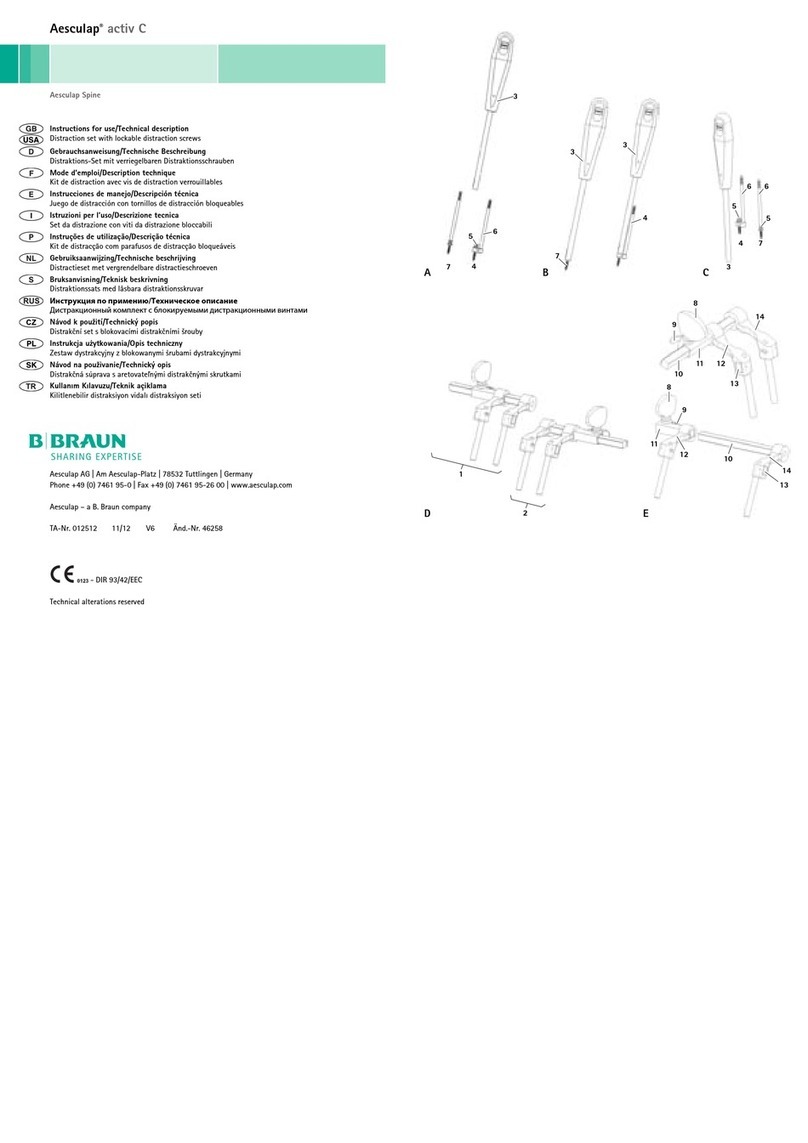
Aesculap Neurosurgery
Tubular shaft instruments
6
¾Do not use oxidizing chemicals (e.g. H2O2) for
mechanical cleaning, as these can cause bleaching
or layer loss.
¾Do not use process chemicals that cause stress
cracks or brittleness in plastics.
¾Clean the product immediately after use.
Please see www.a-k-i.org for more detailed informa-
tion on hygienically safe reprocessing which is protec-
tive of materials and retains their value.
¾Use appropriate cleaning/disinfecting agents if the
product is put away in wet condition. To prevent
foam formation and reduced effectiveness of the
process chemicals: Prior to mechanical cleaning
and disinfection, rinse the product thoroughly with
running water.
Preparations at the place of use
¾Disassemble the product immediately after use, as
described in the respective instructions for use.
¾Open up instruments with hinges.
¾Rinse non-visible surfaces such as those in instru-
ments with concealed crevices, lumens or complex
geometries, preferably with distilled water, using a
disposable syringe for instance.
¾Remove any visible surgical residues to the extent
possible with a damp, lint-free cloth.
¾Transport the dry product in a sealed waste con-
tainer for cleaning and disinfection within 6 hours.
Preparation before cleaning
¾Disassemble the product prior to cleaning, see Dis-
assembly.
Cleaning/disinfection
¾Carry out ultrasound cleaning:
– as an effective mechanical supplement to manual
cleaning/disinfection.
– as a pre-cleaning procedure for products with
encrusted residues, in preparation for mechanical
cleaning/disinfection.
– as an integrated mechanical support measure for
mechanical cleaning/disinfection.
– for additional cleaning of products with residues
left after mechanical cleaning/disinfection.
¾Clean and disinfect microsurgical products
mechanically if they can be placed securely in the
machine or on the positioning aids.
Manual cleaning/disinfection
¾Keep working tips open for cleaning.
¾When cleaning instruments with movable hinges,
ensure that these are in an open position and, if
applicable, move the joint while cleaning.
¾Prior to manual disinfecting, allow water to drip off
for a sufficient length of time to prevent dilution of
the disinfecting solution.
¾After manual cleaning/disinfection, check visible
surfaces visually for residues.
¾Where necessary, repeat the cleaning process.
CAUTION
Damage to the product due to
inappropriate cleaning/disinfecting
agents and/or excessive tempera-
tures!
¾Use cleaning and disinfecting
agents approved for aluminum,
plastics, and high-grade
steel, for example, according to
the manufacturer's instructions.
¾Observe specifications regarding
concentration, temperature and
exposure time.
